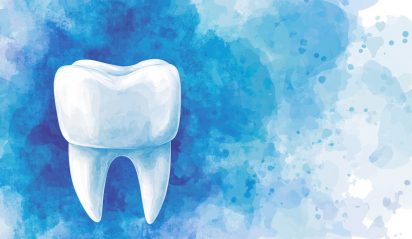When people think of anorexia nervosa, they often focus on its emotional toll or the visible signs like low body weight and low energy. But this complex eating disorder also has a profound impact on virtually every system within the body, including the teeth, gums, and mouth. Oral health is a window into overall well-being, and in individuals with anorexia, the teeth often bear some of the earliest and most noticeable signs of distress.
What is Anorexia Nervosa?
Anorexia nervosa is a serious psychiatric illness characterized by restricted food intake, intense fear of gaining weight, and a distorted body image. It often leads to malnutrition, hormonal changes, and systemic health complications—including significant damage to oral and dental health.
How Does Anorexia Affect Oral Health?
1. Nutritional Deficiencies Harm the Teeth and Gums
When the body is deprived of essential nutrients, every organ system is affected, including the mouth. Teeth and gums require a steady supply of vitamins and minerals to stay strong and healthy. In anorexia, chronic food restriction often leads to deficiencies in:
Calcium and vitamin D, which are vital for strong enamel and bone density
Vitamin C, essential for gum tissue repair
B vitamins, which help prevent sores, inflammation, and tongue swelling
Iron, the deficiency of which can lead to oral ulcers and increased infection risk
One study found that up to 89% of patients with anorexia show signs of enamel erosion or other dental issues, highlighting the direct impact of nutrient deprivation on oral health (Moura-Grec et al., 2014).
2. Self-Induced Vomiting Erodes Tooth Enamel
Many individuals with anorexia also engage in purging behaviors like self-induced vomiting. When this occurs regularly, the acidic content from the stomach repeatedly bathes the teeth, gradually eroding the enamel—the hard, protective outer layer of the tooth. Over time, this leads to:
Increased tooth sensitivity
Yellowing or discoloration
Cracking, chipping, or translucency of teeth
Higher risk of cavities and decay
One review found that 68% of individuals with eating disorders who vomit regularly experience significant dental erosion, especially on the inner surfaces of the upper front teeth (Robb et al., 2020).
3. Dry Mouth and Swollen Salivary Glands
Anorexia nervosa often results in xerostomia, or chronic dry mouth. This can occur from dehydration, malnutrition, and the use of certain medications such as antidepressants or diuretics. Saliva is crucial for neutralizing acids, washing away food particles, and maintaining a healthy pH in the mouth. Without it, the oral environment becomes more acidic and vulnerable to decay.
Additionally, self-induced vomiting or starvation may cause swelling in the parotid glands, which are the salivary glands located near the jaw. This can lead to puffy cheeks, jaw pain, and decreased saliva flow.
Research shows that up to 93% of individuals with anorexia who purge experience enlarged salivary glands, with a notable impact on oral function and self-esteem (Józefowicz-Korczyńska et al., 2016).
Signs of Anorexia Nervosa in the Teeth
People with anorexia may experience a range of oral and dental symptoms, including:
Tooth sensitivity to hot or cold foods
Sores or ulcers on the tongue, cheeks, or gums
Gum bleeding or inflammation (gingivitis)
Halitosis (chronic bad breath)
Tooth decay and cavities
Jaw pain or limited opening due to muscle or joint issues
Changes in bite or tooth alignment from enamel loss or shifting teeth
These symptoms not only affect physical health but can also cause emotional distress, shame, or reluctance to seek dental care.
Why Oral Health Matters in Eating Disorder Recovery
Dental health isn’t just about aesthetics; it’s a key part of self-confidence, physical nourishment, and overall quality of life. When oral health declines, it can reinforce negative feelings about appearance and interfere with eating, which can in turn complicate recovery.
Caring for oral health during recovery from anorexia requires an integrated approach. This includes:
Gentle dental hygiene practices, especially when enamel is fragile
Rinsing with baking soda or a fluoride mouthwash to neutralize acids
Regular dental check-ups, preferably with providers experienced in eating disorder care
Nutrition restoration, which is fundamental to healing oral tissues
Compassionate dental care, paired with comprehensive eating disorder treatment and medical monitoring, can significantly improve oral outcomes and support long-term recovery.
Magnolia Creek is dually licensed to treat eating disorders and a multitude of co-occurring disorders. We tailor our treatment plans to individual needs and goals while empowering every client in our care to embrace recovery with resilience and independence.
Sources
- Kaye, W. H., et al. (2013). Neural mechanisms of anorexia nervosa: A focus on reward and motivation. Nature Reviews Neuroscience, 14(9), 589–600.
- Racine, S. E. (2017). Trauma and eating disorders: A systematic review. Journal of Clinical Psychology, 73(5), 425–440.
- Arnsten, A. F. T., Raskind, M. A., Taylor, F. B., & Connor, D. F. (2015). The effects of stress exposure on prefrontal cortex. Neurobiological Stress, 1, 89–99.
- Morris & Katzman (2003). The impact of the media on eating disorders in children and adolescents, J. Eat. Disord., 1, 10. (PMCID: PMC2792687)
- Fardouly et al. (2021). Social media and disordered eating in teens, Body Image, 36, 192–200.
- Arcelus, J., Mitchell, A. J., Wales, J., & Nielsen, S. (2011). Mortality rates in patients with anorexia nervosa and other eating disorders: A meta-analysis of 36 studies. Archives of General Psychiatry, 68(7), 724–731.














































